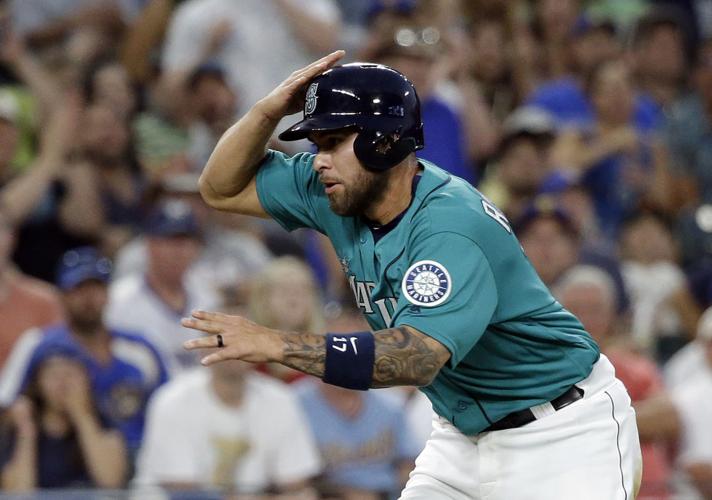Instead of selecting about 1,100 players in this week’s MLB draft, the process will be limited to five rounds and 160 players.
It’s a dream crusher.
Cinderella stories — those against-the-odds 17th- and 32nd-round draft picks who fought on and reached the big leagues — will be eliminated so owners can save money.
If any baseball precinct should care, it’s Tucson, which has been Cinderella City across the last 50 years of the MLB draft.
Tucson High and UA catcher Ron Hassey, an 18th-round pick in 1976, played in 1,192 big-league games and three World Series.
Canyon del Oro second baseman Ian Kinsler, a 17th-round pick in 2003, played in four All-Star Games.
Sabino High and Pima College pitcher Tim Wood, a 44th-round pick in 2002, spent three years in the big leagues.
A five-round, abbreviated draft comes off as a career-limiting foul ball: In Tucson history, 46 high school baseball players have reached the majors. Yet 34 of them were not selected in the first five rounds.
Sunnyside High School and Pima College outfielder Stefen Romero, a 12th-round pick in 2010, played parts of three seasons for the Seattle Mariners.
CDO and UA outfielder Colin Porter, a 17th-round pick in 1998, played for the Astros and Cardinals.
Palo Verde High pitcher Andy Hassler, a 25th-round pick in 1969, spent 14 years pitching in the big leagues.
Without rounds 6-40, 19 UA baseball players over the last four decades might not have reached the major leagues, or been given a chance. Who? How about Diamondbacks reliever Kevin Ginkel, who was a 22nd-round selection? How about Steve Selsky, a 33rd-round pick of Cincinnati in 2011, who ultimately played for the Reds and Red Sox.
Third baseman Chip Hale, who helped lead Arizona to the 1986 College World Series title, was not selected until the 17th round of the 1987 draft. What are the odds Hale would’ve played seven years for the Twins and Dodgers had the ‘87 draft been limited to five rounds? He almost surely would’ve never been the manager of the Arizona Diamondbacks — or even manager of the 2006 PCL champion Tucson Sidewinders — let alone bench coach of the 2019 World Champion Washington Nationals.
For more than a century, MLB has been about opportunity. Now? Not as much.
Rincon High School pitcher Pat Darcy was a free agent who won a 1976 World Series championship ring with Cincinnati’s Big Red Machine. UA shortstop Trevor Hoffman, selected in the 11th round of the 1989 draft, went on to become a Hall of Fame relief pitcher.
In 1959, former Marana schoolboy Dave Baldwin, who pitched Arizona to the College World Series championship game, was offered a free agent deal with the Phillies over an offer from the Yankees.
In his biographical book “Snake Jazz”, Baldwin said he picked the Phillies because “it was a sad-sack organization, an easier climb to move up than the Yankees.”
Talk about dreams coming true. A fringe prospect like Baldwin worked to develop his craft with such earnestness that he finally reached the big leagues at age 28, appearing in 176 games for the White Sox, Twins and Washington Senators.
You don’t have to be a glamor draft pick to make a lifetime in baseball, and that’s what makes this year’s abbreviated draft so unappealing. Imagine how former UA lefty Craig Lefferts’ life might’ve changed had the 1980 draft been a mere five rounds.
Lefferts’ baseball story is irresistible.
The son of an Air Force pilot from Amphitheater High School, Lefferts hoped to follow his father Edward’s career path and enroll at the Air Force Academy in 1976. But Lefferts had a depth-perception issue on his eye test and was not accepted as a pilot candidate.
No college on any level offered Lefferts a scholarship, so he wrote letters to a dozen or so colleges and asked if he could try out as a walk-on. The only coach to answer was Arizona’s Jerry Kindall.
Lefferts once told me his fastball in high school was clocked at 75 mph. Predictably, he was cut from a tryout to make the Arizona junior varsity in 1976, a year the Wildcats won their first national title.
Encouraged by Kindall to return in 1977, Lefferts this time made the Arizona roster. In the 1980 College World Series championship game, Lefferts was the winning pitcher. Kindall told baseball scouts that Lefferts had the makeup of a Whitey Ford or Tommy John, crafty and smart lefties without much velocity, but with a ton of baseball instinct who knew how to win.
The Chicago Cubs drafted Lefferts in the ninth round of the 1980 draft. He went on to pitch 12 years in the big leagues and for the last 19 years has been a minor-league coach and instructor.
Talk about beating the odds.
If Craig Lefferts came along today, he might be offered a $20,000 free agent’s deal — that’s the maximum allowed by MLB this year — or maybe because he didn’t throw much harder than a knuckleballer, he wouldn’t have been signed at all.
All the leading baseball outlets have written that MLB plans to eliminate as many as 50 or 60 minor-league teams after the coronavirus pandemic. Future MLB drafts won’t likely go deep enough to discover future MLB players like UA outfielder Johnny Moses, a 16th-round pick in 1980 who went on to play 11 years for the Mariners, Twins and Tigers.
After his playing days, Moses coached for the Braves, Reds, Dodgers and Mariners. He retired a year ago, at 62. Not bad for a not-so-good prospect who was the 395th man chosen in the 1980 draft.
This week, the draft ends at selection No. 160. The next John Moses might go on to sell insurance.





